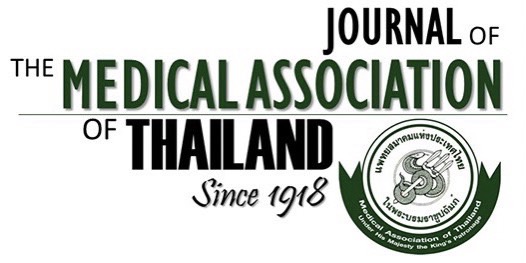Neovascular Glaucoma: A Retrospective Review of 5-year Experience in Songklanagarind Hospital
Weerawat Kiddee MD*, Thawat Tantisarasart MD*, Boonchai Wangsupadilok MD*
Affiliation : * Department of Ophthalmology, Faculty of Medicine, Prince of Songkla University, Hat Yai, Songkhla, Thailand
Objective : To review causes, treatment modalities, and success of neovascular glaucoma treatment in the past five years at
Songklanagarind Hospital.
Material and Method: Neovascular glaucoma of any causes between February 2005 and January 2010 were retrospectively
reviewed. The patients were divided into six major treatment subgroups. A medical treatment group, an intraocular bevacizumab
injection group (IOB), a trabeculectomy with mitomycin C group, a trabeculectomy with mitomycin C plus adjunctive
intraocular bevacizumab injection group, a glaucoma drainage device group, and a transscleral cyclophotocoagulation
group. All treatment outcomes were compared and classified as success or failure according to the specific criteria.
Results : One hundred and sixty-six eyes were reviewed. The mean age at the time of diagnosis was 60 + 16 years and the
average follow-up duration was 21 + 18 months. The most common etiology was central retinal vein occlusion (47%)
followed by proliferative diabetic retinopathy (42%) and ocular ischemic syndrome (5%). The mean pressure was reduced
from 38.1 + 12.5 mmHg at baseline to 17.8 + 12.3 mmHg at the final visit. After treatment, visual acuity was worse, remained
stable, and improved in 45%, 37%, and 18% of the patients, respectively. In the trabeculectomy with mitomycin C plus
intraocular bevacizumab injection group 54% of eyes were classified as a complete success, which was significantly higher
than the other groups (p<0.001). Although filtering surgeries with adjunctive bevacizumab showed no benefit over standard
filtering surgeries in terms of VA change, pressure reduction, and success criteria but complications were found to be less in
eyes treated with adjuvant bevacizumab.
Conclusion : Key factors are treatment of the underlying disease responsible for ischemic triggers and treatment of the
increased intra-ocular pressure. Even treatment with bevacizumab cannot increase the success rate but this seems to reduce
the surgical complications.
Keywords : Neovascular glaucoma, Bevacizumab (Avastin), Trabeculectomy, Glaucoma drainage device



